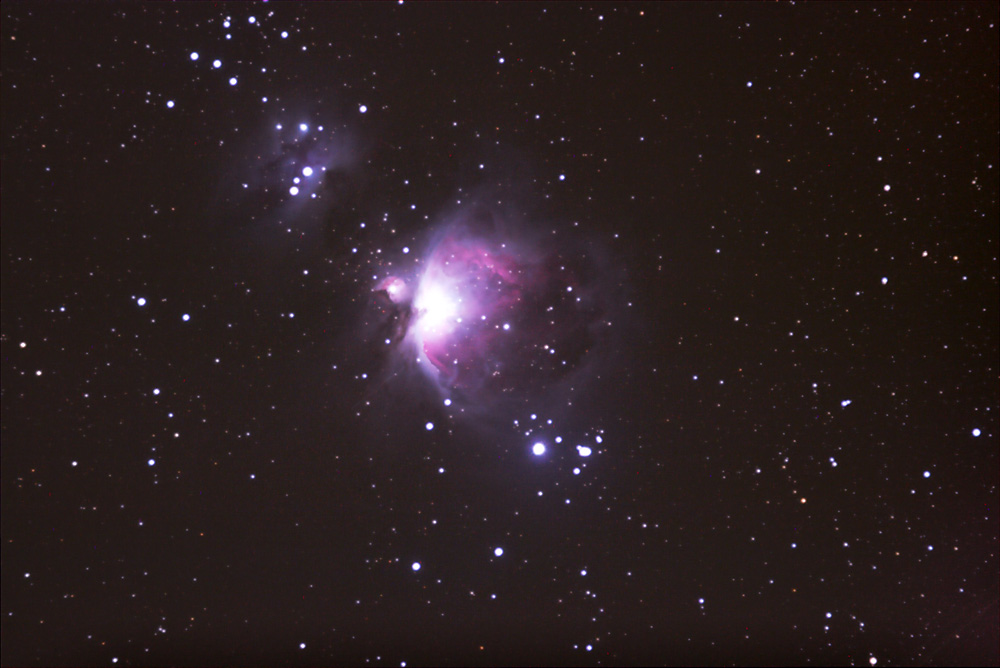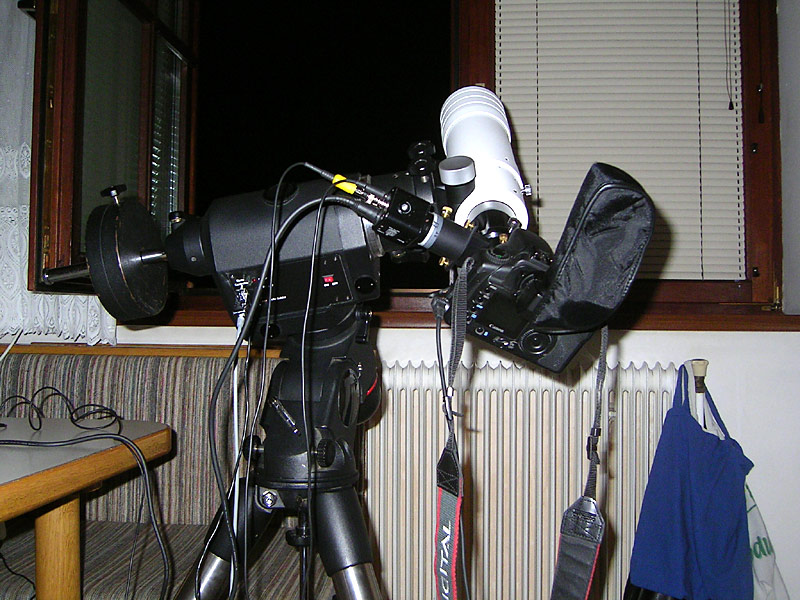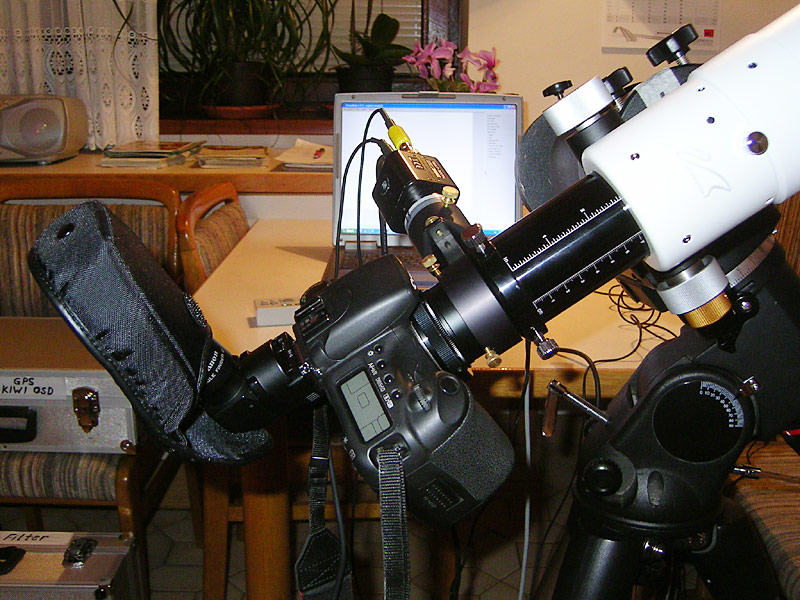Orion nebula M42 and reflexion nebula NGC 1977
| Frameless version of this page |
The Orion nebula with the Messier number M42 is a diffuse galactic nebula consisting of a big cloud of gas and dust. This object is designated also as NGC 1976. The distance is about 1.500 light years and the dimension is about 25 light years. The Orion nebula is in the constellation Orion below the three stars of the Orion belt. This nebula with a brightness of +3.7mag can be easily seen with the naked eye. The best observability of M42 exists in the winter months.
The reflexion nebula NGC 1977 is about 30 arc minutes northern of the famous Orion nebula M42. This nebula has a group of bright and hot stars enclosed. So this reflexion nebula appears in a blue light. But in this blue shiny nebula also a dark cloud exists. This dark cloud looks like a running man from the perspective of our solar system.
M42 and NGC 1977 Original Canon 20D, 2 x 180s = 360s, f=6.0, ISO 800, no Darks, no Flats |
This image from the Orion nebula was made on November 23, 2008 at 23:18 UTC only as a test image with my new William Optics Megrez 72 FD Doublet APO. After days with snow clouds and stormy weather the southern sky region got relative clear for about 90 minutes at the midnight of November 23. /24., 2008. This short time window was promptly used by me to make test images from M42 through an open window in the first floor of my house in Nonndorf. Therefor the WO Doublet APO was mounted on the EQ6 and guided with a WAT-120N on the Lumicon off axis guider (Easy Guider). The EQ6 mount was controlled by the notebook with ASCOM pulse guiding accomplished with EQMOD, Guide8 and Guidemaster. The camera used for imaging was my original DSLR Canon EOS 20D. The WO Megrez72 has an aperture of 72mm and a focal length of 432mm. The mechanics and the drawtube are also of high quality. Because of the big difference between inside temperature and outside temperature of nearly 30 degree Celsius (=30 Kelvin) on the open window a permanently and extremly turbulent air movement occured. The guiding star very often made fast movements of some arc seconds on the camera image. Inside the room the mount certainly could not be aligned to the northern pol of the earth axis. And so surely an alignement error of some degrees was the result. So the guiding was extremly difficult for the mount control equipment. Also the other stars were moved permanently by the turbulent air. So relative big star diameter in the image were the result. In fact under this circumstances no imaging should be done. But it was only a first function test for this equipment combination. |
The equipment in use on the open window - temperature difference 30 degrees |
Lumicon Off Axis Guider, WAT-120N, Baader MPCC, Canon 20D with angle finder on WO Megrez 72 |
Notwithstanding this extreme imaging conditions I was surprised positive about the result. The guiding with the EQ6 worked relative good and the WO Megrez 72/432mm FD Doublet APO really seems to be a good optic for wide field imaging.
November 28, 2008 |
|
Site Home |